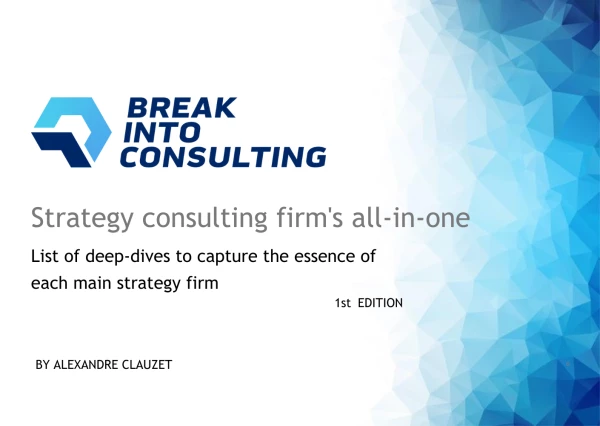Hi all,
For the secong round of BCG, candidates have to pass a written business case (around 2 hours of preparation, several documents to read, maximum of 5 slides to present as if you were in a client meeting).
- Do you have any recomendation about how to prepare yourself for this round?
- Any tips to successfully pass this step?
Thanks a lot!
















